You can make a ceramic pan non-stick again by seasoning it with oil. Use an oil with a high smoking point. Apply a thick layer of the oil on the non-stick ceramic pan’s surface. Heat it for 20 minutes and then let it cool.
Good quality ceramic cookware makes cooking a breeze. With ceramic cookware, you will get exceptional heat, quick food release, and a non-stick, non-toxic cooking experience.
With the passage of time, ceramic pans tend to lose their effectiveness like all other kitchen appliances and cookware. Your oh-so-wonderful pan can easily turn into a mess that will ruin everything you make in the pan.
Worry not – one of the best things about ceramic cookware is that the non-stick coating can be easily revived! Let’s see what you can do to make your ceramic pans as good as new!
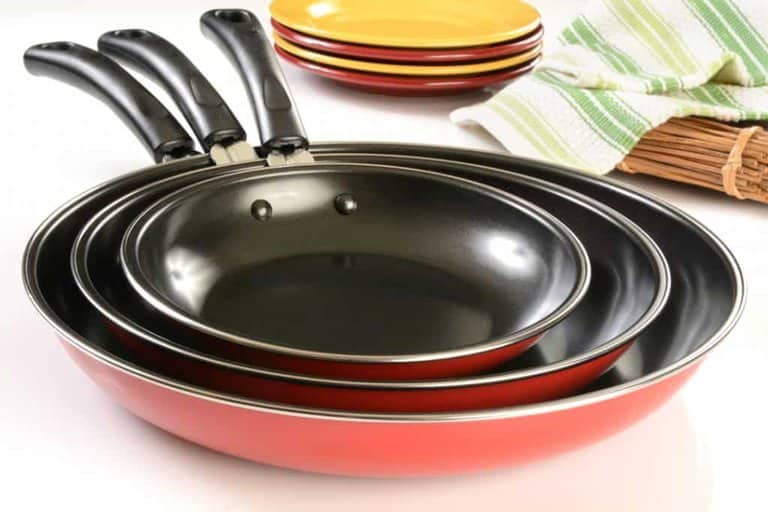
Why Do Pans Lose the Non-Stick Layer
It is pertinent that you figure out the root cause of a problem before you move towards figuring out a solution. Here are reasons why your pans lose the non-stick coating.
Temperature Changes
Ceramic pans usually have copper or aluminum bodies that are coated with a layer of ceramic. When you are using a metal pan, you don’t have to worry about temperature changes. This is not the case with ceramic pans.
When you provide heat to a ceramic pan, the top layer and the body of the pan expand at different speeds. Eventually, this difference causes the ceramic layer and the frame to separate and you get a warped surface.
We suggest that you remain careful and vigilant while using ceramic cookware. You should not expose your pans and pots to extreme temperature fluctuations. Similarly, after cooking, if you put a hot ceramic pan right from the stove into cold water, the pan will receive a thermal shock.
This will not only distort its shape but will also affect its performance.
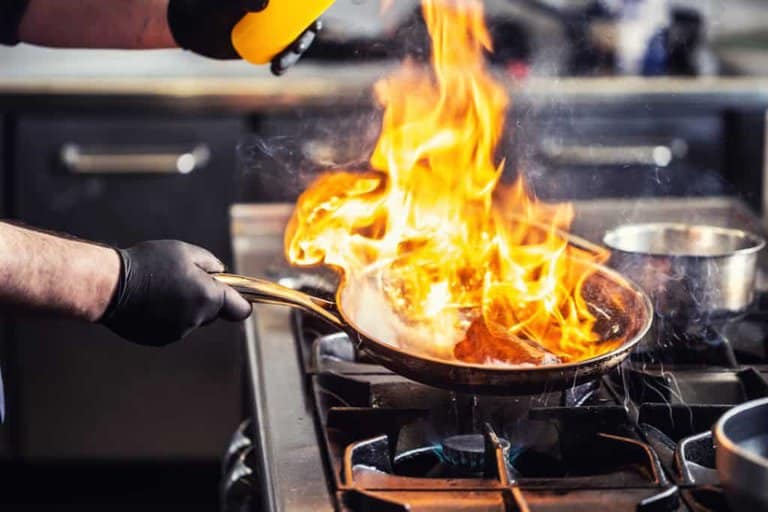
Using Metal Utensils
Metal spatulas, forks, knives, etc. are the worst enemies of your ceramic cookware. Keep your non-stick pans away from them. Even if you use the metallic spatula very carefully in the ceramic pan, it will still erode the surface.
Wooden and rubber utensils are perfect for ceramic pans since they are not hard on the coating.
Lack of Grease/Oil
Adding a little extra grease to the pan will certainly keep your fat levels low but at the cost of the state of your cookware. When you don’t grease the pan, the food starts to stick to it. Once you start cleaning the pan, it will erode the non-stick coating slightly.
Be vigilant and still, your non-stick pan has started to show wear and tear? It is normal. The pans have a certain time limit and once they cross it, they are bound to lose their efficacy.
Harsh Cleaning
If you have burnt food inside your pan, don’t scrub it off with steel wool – your ceramic pan will be ruined. No matter what kind of coating your pans have, don’t use chemical cleaners with them – or else you will soon be throwing them out in the bin.
The ceramic layer should not be washed with harsh, abrasive cleaners. Utensil scourers, degreasers, and steel wool leave behind tiny scratches that affect the pan and its performance.
Apart from harsh cleaning agents, detergents full of chemicals are a no go for your ceramic pans. The detergent will eat away at the ceramic surface. This will render the pan useless.

Ways to Rejuvenate the Non-Stick Coating on Your Pan
Now that you know the reasons why ceramic pans go bad, it is time to learn how to repair them and make them as good as new. Although you can’t entirely reverse the damage, you can minimize the impact.
Seasoning the Ceramic Pan
Unlike cast-iron cookware, the ceramic pans don’t have to be seasoned when they are new. Instead, the correct time for seasoning ceramic cookware is when it starts to become non-efficient.
Here’s how you can season the ceramic pan.
Things You Will Need
- Warm Water
- Liquid Dishwashing Soap
- Soft Sponge
- Paper Towels
- Oil with High Smoking Point (Grapeseed, Flaxseed, etc.)
Method
- When there is food residue in the pan, you can’t season it perfectly. The first thing you need to do is clean your pan thoroughly.
- Fill the sink with warm water.
- Add 1 tbsp. of liquid dishwashing soap to the water.
- Mix until suds are formed.
- Submerge the ceramic pan in it for 15 mins.
- Using a soft sponge, remove the food particles from the pan.
- Take the pan out of the sink and wash it with clean water.
- Pour oil with a high smoking point into the ceramic pan.
- Cover your entire pan with this oil. You can spread the oil with a kitchen towel or you can use your fingers instead.
- Ensure that the oil does not pool to the sides of the pan. Rather, it should create a thin layer on the surface.
- Keep the pan on the stove.
- Set the heat to medium. Don’t set the flame at high since it will burn the oil and that is not what we want.
- Keep the pan over medium heat for 10 minutes. You will see smoke coming from the pan. Let the pan sit for 2 to 3 minutes. Turn the flame off.
- Let the pan cool and reach room temperature.
- Once it is cool enough, wipe it with a paper towel and remove the excess oil.
- Your pan is ready to use!
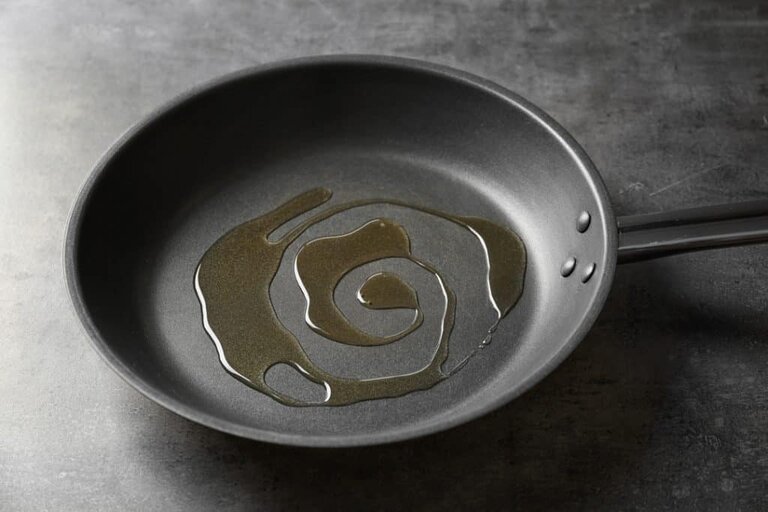
Use Table Salt
If your non-stick coating is still intact but your ceramic pan isn’t working properly anymore, you should give the pan a salt rub.
Things You Need
- Salt
- Paper Towel
Method
- Take 5 tbsp. of salt and cover the non-stick coating thoroughly.
- Place the non-stick pan on the stove.
- Keep the flame low.
- The color of the salt will start to change slowly. It will become brown after 10 minutes. Once this happens, turn the stove off.
- Let the pan cool.
- Let the salt sit for an hour.
- Use a paper towel to remove the cooked salt.
- Wipe the interior of the pan clean. Your pan will be as good as new.
Use Vinegar and Baking Soda
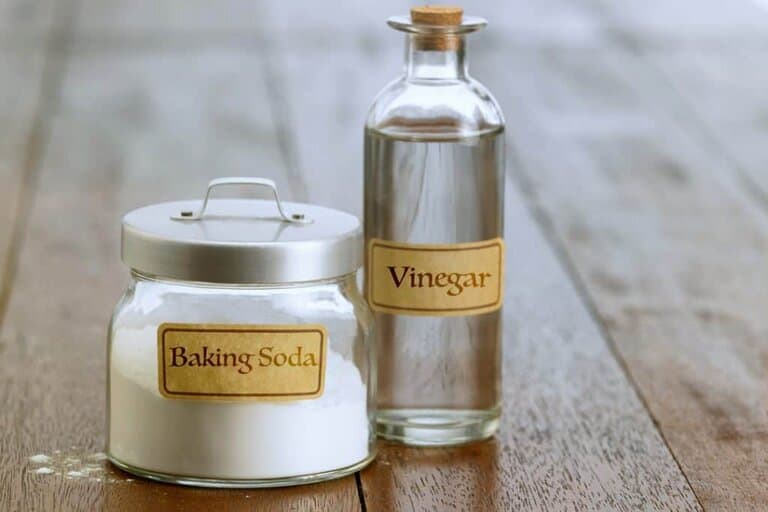
Things You Will Need
- Baking Soda
- White Vinegar
- Vegetable Oil
Method
- Take a cup full of lukewarm water.
- Take two tbsp. baking soda. Add it to the water.
- Add ½ cup of white vinegar to the baking soda-water mixture.
- Pour this mixture into the ceramic pan.
- Heat the non-stick pan on a medium flame for 10 minutes.
- The mixture will start to boil.
- Turn off the stove and let the pan cool.
- Wash it thoroughly and season the pan with vegetable oil.
Seasoning the Pan with Coconut Oil
Things You Will Need
- Dishwashing Soap
- Coconut Oil
Method
- Wash the pan with dishwashing soap.
- Dry it thoroughly.
- Preheat the oven from 300°F to 350°F.
- Put your ceramic pan inside the oven for 5 minutes.
- Apply coconut oil carefully to the surface of the pan to fill all the pores. The layer of the oil should be at least 1.25 inches thick.
- Keep the pan inside the oven for 2 hours.
- After that, turn the oven off but keep the pan inside the oven overnight.
- Take it out the next morning. Your pan will be good to use.
Use a Non-Stick Coating Spray
If nothing else works, you can always use a non-stick coating spray.
Things You Will Need
- Non-Stick Coating Spray
- Paper Towels
- Dishwashing Soap
Method
- Use lukewarm water and dishwashing soap to clean your pan.
- Wipe it with paper towels and dry it thoroughly.
- Hold the spray at a distance of 10 cm from the pan.
- Apply an even layer of the coating on the pan.
- Allow it to dry for 30 minutes.
- Leave your pan overnight. In the morning, your pan will be as good as new!
Tips for Maintaining Your Non-Stick Pan
Here are tips that will keep your ceramic pan in pristine condition for a long time to come.
Re-season the Pan
Seasoning your pan is not a one-off process. You have to keep repeating the process if you want to cook effortlessly in the pan. Regular use will affect the seasoned layer of the pan. You should season the pan again after two months.
Cook at Low Temperatures
If you cook at high temperatures, it will destroy the non-stick coating. It will also warp the metal frame itself. It is smart to use a low-medium flame as you cook in your ceramic pans.
Use Wooden Utensils
You can use metallic utensils with cast-iron or steel cookware. There is no need to torture your ceramic cookware. It is better to use wooden or rubber utensils to protect the coating of your pan.
Clean the Pan Regularly
It is bad to put your pans into the sink right from the stove. This doesn’t mean that you should not clean your pans regularly. When you have cooked your meal, allow the pan to cool, and then wash it in lukewarm, soapy water.
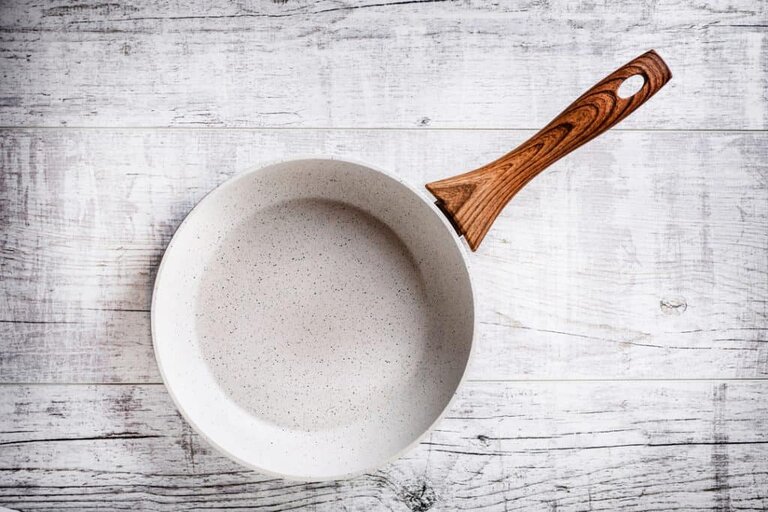
FAQs for How to Make a Ceramic Pan Non-Stick Again
For how many years can you use a non-stick ceramic pan?
You can’t save the non-stick ceramic pan for ages, unlike your age-old cast iron cookware. It is usable for only a certain period of time. After that, you will have to repair it or change it. High-quality pans can be used for at least 3 to 5 years with careful usage.